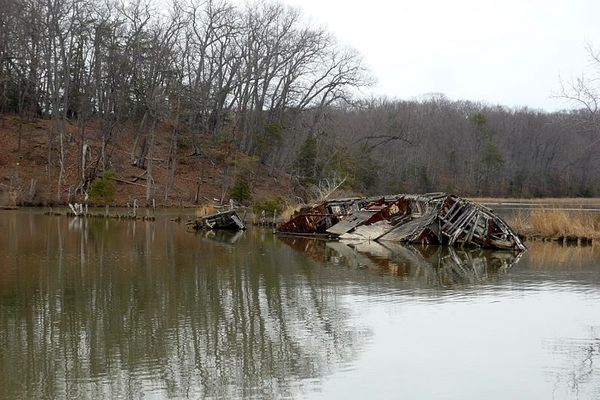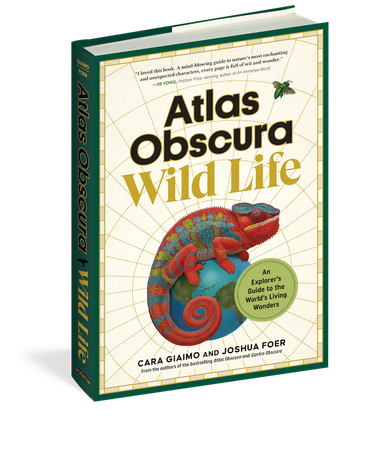
1. Blackwater National Wildlife Refuge
Established in 1933 to provide a sanctuary for migrating birds, Blackwater National Wildlife Refuge teems with wildlife – including two species both once in danger of going extinct: the Delmarva Peninsula fox squirrel, and the mighty bald eagle.
In 1967, the bald eagle population was added to the endangered species list, and thanks to conservation efforts, including the establishment of places like Blackwater Refuge, the birds now thrive. You’d be hard pressed to find a better place to observe our national symbol in the wild, as Blackwater also boasts the largest nesting population of bald eagles on the East Coast north of Florida. From an observation platform off the Refuge’s Wildlife Drive, you can peer into spotting scopes to see the enormous birds in their tree-top nests, and watch as eaglets fledge throughout the spring and summer.
The largest natural population of the Delmarva Peninsula fox squirrel, a light-gray squirrel species with a big fluffy tail, also thrives in the refuge, due partially to the abundance of the Loblolly pine seeds that form a large part of their diet. Look for these squirrels on the ground, where they spend large amounts of time foraging for food.
But those two species are just a sliver of what Blackwater Refuge, named one of the “Last Great Places” by the Nature Conservancy, has to offer. It has been designated an Internationally Important Bird Area, with hundreds of bird species either calling the area home or stopping by to rest and feed along their epic migrations. A small Asian elk species called the “sika” lives here; listen for its shrill bugle. Hiking trails, scenic roads, and even paddling trails across the refuge’s 32,000 acres allow visitors an up-close view of more wildlife than they could possibly imagine.
2145 Key Wallace Drive, Cambridge, MD 21613-9536
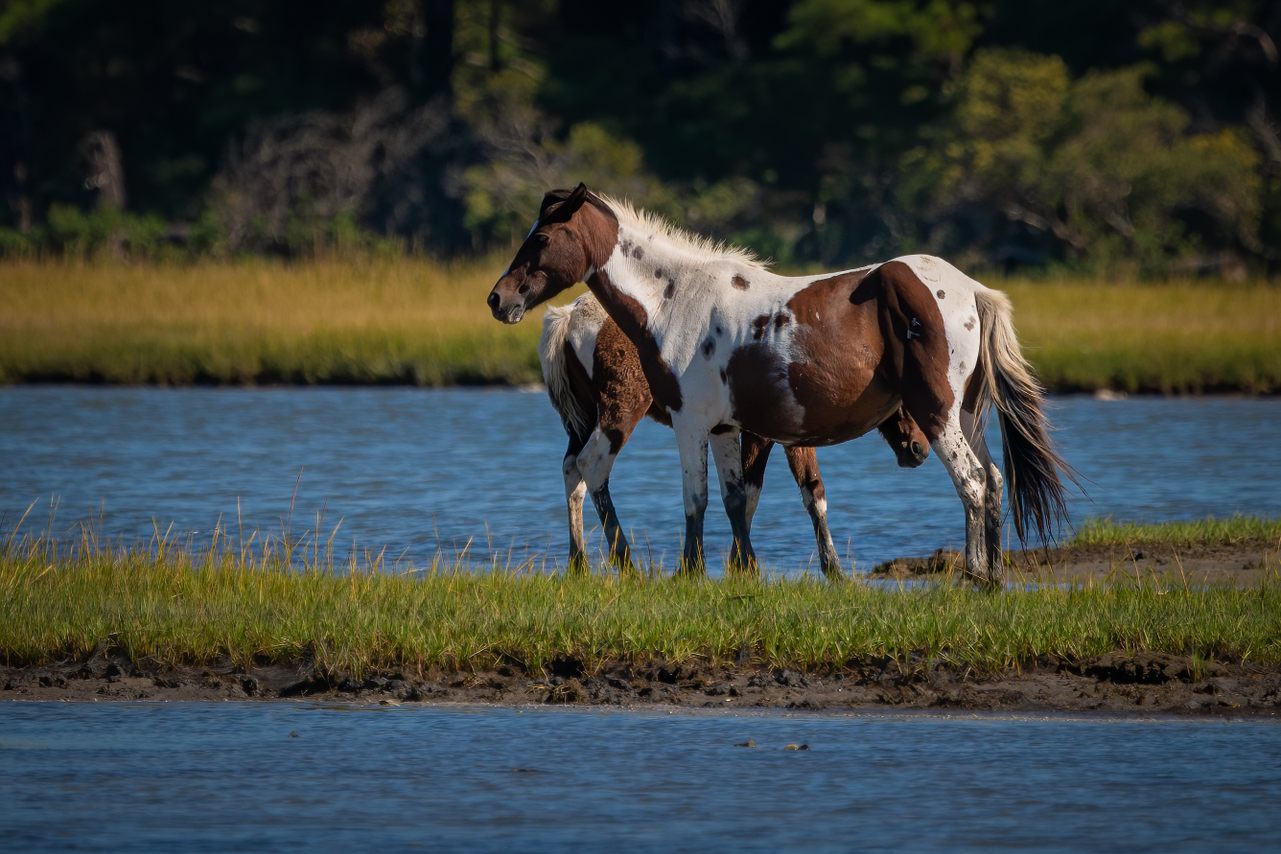
2. Assateague Island National Seashore
No one knows how long the herds of wild horses have lived on Assateague Island. Some say they are the descendants of horses that survived a shipwreck in the 18th century—perhaps the Spanish galleon La Galga, which wrecked near the coast in 1750. Others believe the horses arrived as early as the 1600s, after escaping the colonial settlers who brought them across the ocean. Whenever they arrived, they are now an essential part of the ecosystem of Assateague.
Over 300 wild horses live at Assateague Island National Seashore. (Well, due to their height, they are technically wild ponies.) The horses roam the island’s beaches, salt marsh, and pine forest, drinking from its freshwater lakes and eating persimmons, rosehips, and dune and marsh grasses.
Assateague is a barrier island, stretching 37 miles down the coast of Maryland and Virginia. No humans live there, and as a designated National Natural Landmark, the island is administered jointly by the National Park Service, the U.S. Fish and Wildlife Service, and Maryland State Parks. To optimize your chances of seeing the wild horses across this large, scenic island, try taking a boat tour along the island’s inner waterway.
Lighthouse Trail, Berlin, Maryland, 21811

3. The Ghost Fleet of Mallows Bay
You’d expect a shipwreck graveyard to be pretty cool. You might not expect it to also be a thriving ecosystem. But at Mallows Bay, a small bay on the Potomac River where the remnants of a fleet of ships built and abandoned during WWI jut out of the water, both are true.
The ghost ships in Mallows Bay date back to the 1910s, when the United States decided to enter the first World War. To aid in the war effort, the federal government ordered one thousand wooden ships to be built within 18 months. It was an impossible order, and in their rush, the shipbuilders cut corners. When the war ended, only a couple hundred ships had been built, and they hadn’t been built particularly well. Because of this, the ships never sold, and instead were abandoned. Now, something close to 230 wrecks sit on the floor of Mallows Bay—they are considered the largest fleet of shipwrecks in the Western Hemisphere.
When, half a century later, an environmental study was done in advance of a plan to clean up the ghost fleet, scientists made a startling discovery: the ruins of the wooden ships had already become part of a healthy ecosystem. The submerged ships serve as a natural reef, and the parts that jut above the waterline are covered in plant growth. Remnants of the armada that never was now provide shelter to osprey and other birds.
To view the ghost ships, explore Mallows Bay Park’s hiking trail, or launch a canoe or kayak from the free boat launch.
Wilson Landing Road, Nanjemoy, Maryland, 20662
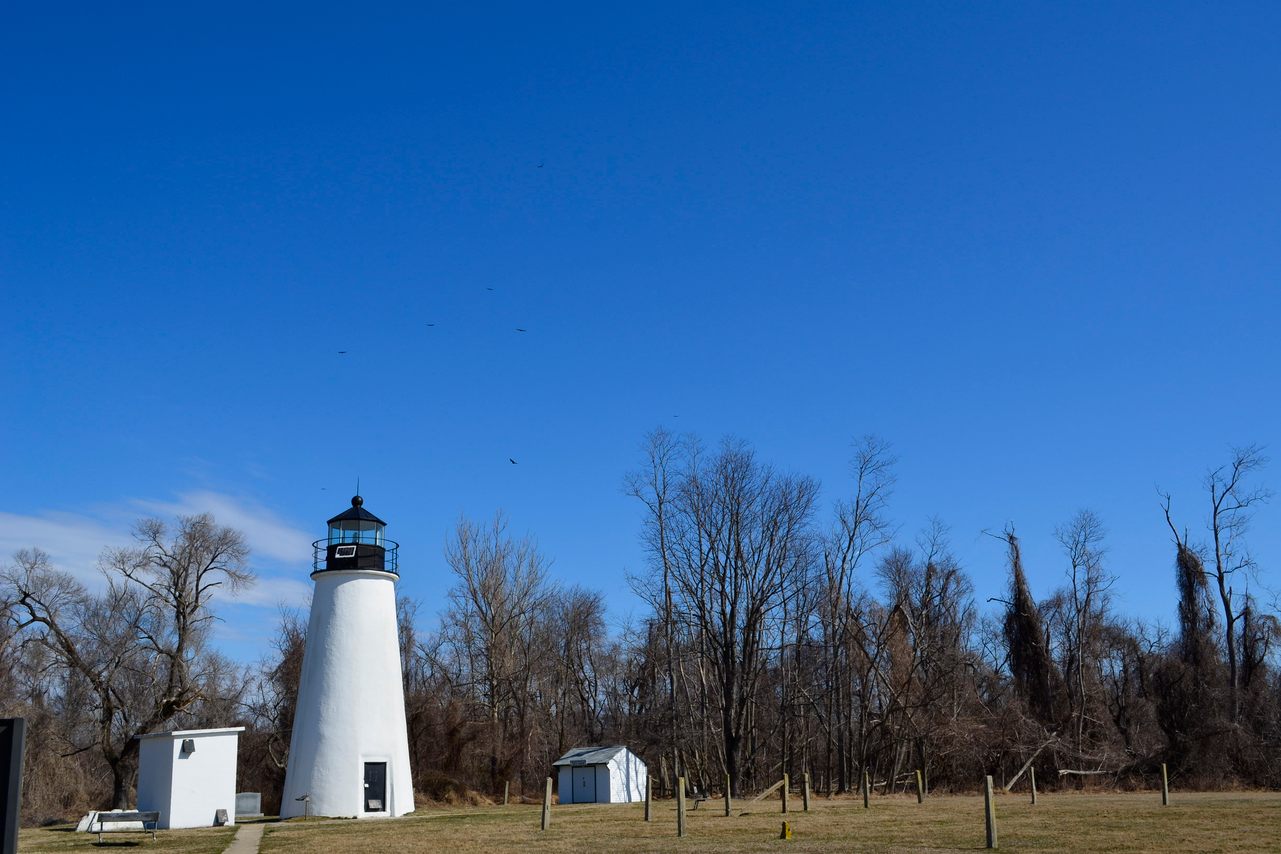
4. Elk Neck State Park
Elk Neck State Park may get its name from a mammal, but it’s the birds you see there that will stay in your memory for years to come. With marshlands, thick woods, white clay cliffs, and sandy shorelines, the park provides a diversity of habitat for many bird species including Great Blue Herons, pileated woodpeckers, Tundra swans, goldfinches, and hawks. It’s no wonder that birding is one of the park’s most popular activities.
Eagles are one of the most imposing birds that nest at the park. They are one of the largest birds in North America, with a wingspan of 6 to 7 feet. This is reflected in the size of the stick nests that the male and female eagles built together in trees: the nests can be 8 feet across and weigh one ton. Listen for their calls, which sound not like the screech you hear in movies (that’s actually a hawk call) but instead like a high-pitched squeak.
Visitors can find birds and other wildlife by hiking Elk Neck State Park’s trails. Many birds live around Wapiti Pond, accessed by a 1.5-mile trail, while the Beaver Marsh Loop trail offers the chance to glimpse eagles, deer, and (duh) beavers. Don’t miss the historic Turkey Point Lighthouse, which once projected light 13 miles away and now offers panoramic views.
4395 Turkey Point Rd, North East, MD 21901
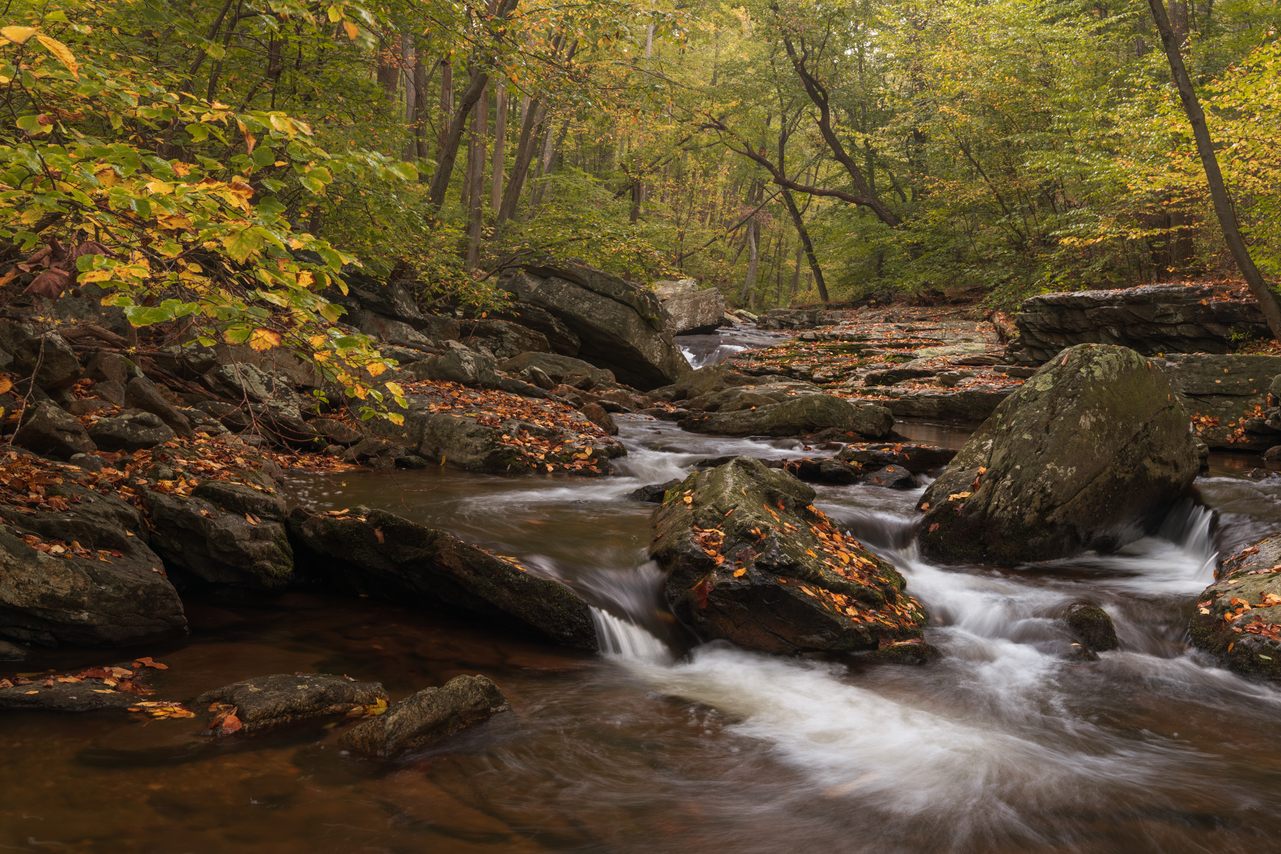
5. Cunningham Falls State Park
In the Catoctin Mountains of northern Maryland, you’ll find the picturesque waterfalls and abundant wildlife of Cunningham Falls State Park.
Two distinct areas make up the park: the William Houck Area is where you’ll find the park’s namesake waterfalls, as well as a lake where visitors can swim, fish, and canoe. A few miles southeast lies the Manor Area, which is home to an aviary and the Catoctin Iron Furnace, a historic iron forge. Both areas offer extensive hiking trails, ranging from a short, flat hike to the Falls, to a 7.5-mile-long hike with steep, challenging ascents.
No matter where you are in the park, whether lounging at the edges of Hunting Creek Lake or sweating on a rocky mountain top after a hard hike, you’re likely to see wildlife. Snakes, foxes, rabbits, and even black bears may be—safely!—observed. Turkey vultures, grouse, and woodcock live in the area, as do eagles. Eagles are shy of humans, but look for them near water, which offers food sources such as fish, turtles, rabbits, and other birds.
14274 William Houck Dr, Thurmont, MD 21788

6. Calvert Cliffs State Park
For 24 miles, Chesapeake Bay is bordered by looming cliffs; these are the centerpiece of Calvert Cliffs State Park. But the cliffs are not just a stunning backdrop to a day at the beach. They, and the shoreline near them, are full of fossils.
To understand why, we need to go back a bit. Ten to 20 million years ago, Southern Maryland wasn’t land at all, but instead a shallow sea. It was during this period that what is now the cliffs were formed. Animals died and sank to the sea floor, where they were covered by more sediment. This happened over countless lifetimes. Finally the sea began to recede, and as it did, the cliffs eroded. Those cliffs offered an accounting of the past as they revealed fossils of whales, sharks, rays, and enormous seabirds.
Visitors to Calvert Cliffs State Park can hunt for fossils themselves at the sandy, quarter-mile beach. (The use of sieves and shovels is allowed, but by no means necessary.) More than 600 species of fossils from the Miocene era have been discovered in the area, so your odds are good. The most common finds include shark teeth and prehistoric oyster shells. And while you’re at the beach, make sure to swim, too!
10540 H. G. Trueman Road, Lusby, Maryland, 20657

7. Pocomoke River State Park
The cypress swamp of Pocomoke River State Park will transport you to another world. Lush with plant life and teeming with animals, there is no better place to sink fully into the natural world and recharge.
The Pocomoke River offers the northernmost bald cypress swamp in the United States. In spring, you can expect to be surrounded by colorful flowers and the stirrings of an ecosystem coming back to life; in summer, you’ll hear the songs of birds of all sorts. More than 50 species of fish swim around you, and river otters play nearby. Canoes, kayaks, and paddle boards are available to rent from the park. If you do bring or rent a watercraft, be sure to check out Corkers Creek paddle trail.
But you don’t need to have a kayak to have fun: hiking, biking, and birding are also popular at Pocomoke River State Park. The Bald Cypress Trail lets you explore the park’s signature ecosystem, and if you visit at dawn or dusk you may spot a Barred Owl. In fact, the park is a birder’s paradise—keep a lookout for glossy ibis, Snow egrets, red-shouldered hawks, yellow-billed cuckoos, and ruby-throated hummingbirds.
3461 Worcester Hwy, Snow Hill, MD 21863

8. Tuckahoe State Park
“Bob-white! Bob-white!” If you hear this call as you hike, bike, horseback ride, or paddle around Tuckahoe State Park, you’re probably not hearing someone calling after their friend Robert White. You’re hearing the distinctive call of the Northern Bobwhite quail, one of the many animals that live among the park’s marshes, waterways, and meadows.
Muskrats and beavers swim around the park’s 60-acre lake—sometimes startlingly close to canoes and kayaks, both of which you can rent from the park office. You’d be smart to explore by boat, as some areas of the park are so wild they can’t be reached any other way. As you paddle Tuckahoe Creek, keep an eye out for ospreys, great blue herons, and bald eagles—the latter of which can fly as fast as 40 miles per hour.
When you want to give your paddling muscles a break, come back to land and explore the 20 miles of trail that navigate the park’s 4,000 acres.
12282 Eveland Rd, Ridgely, MD 21660
Sponsored by Visit Maryland.


